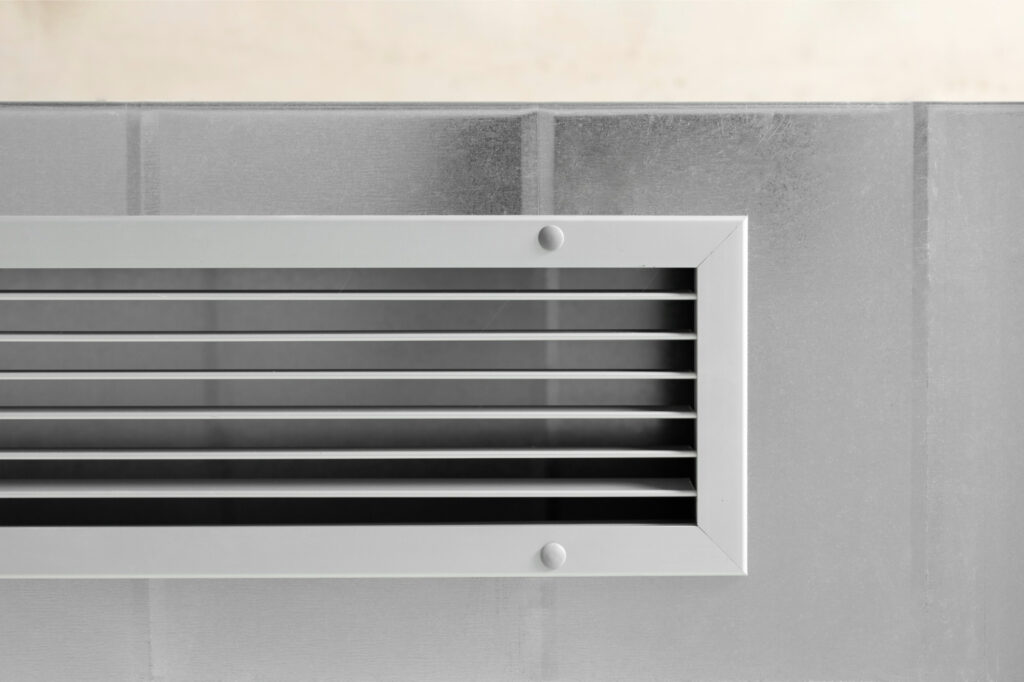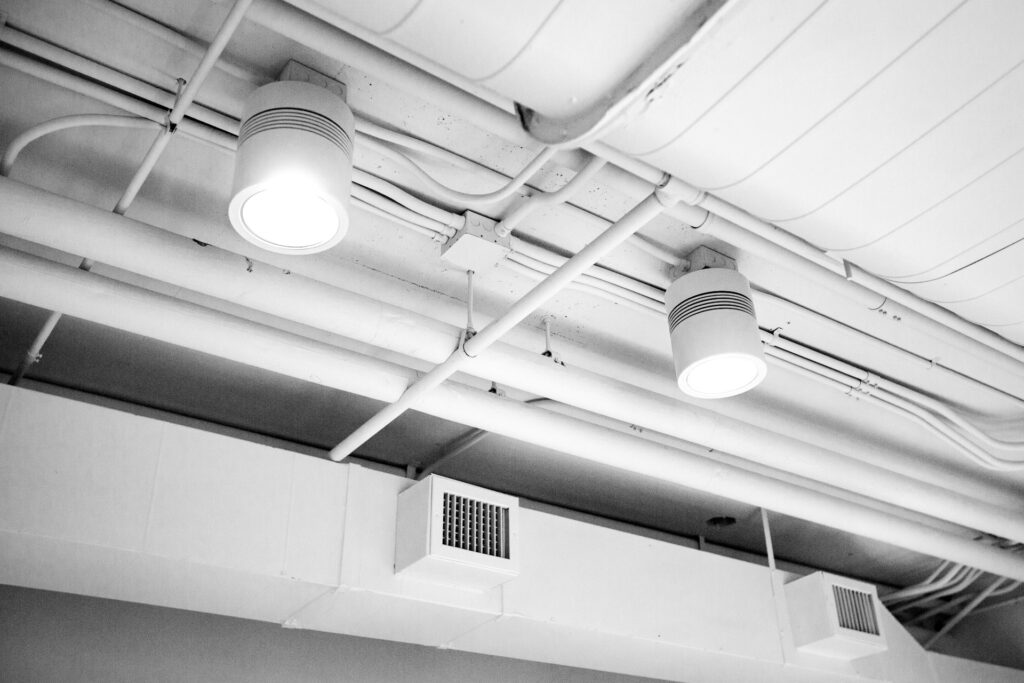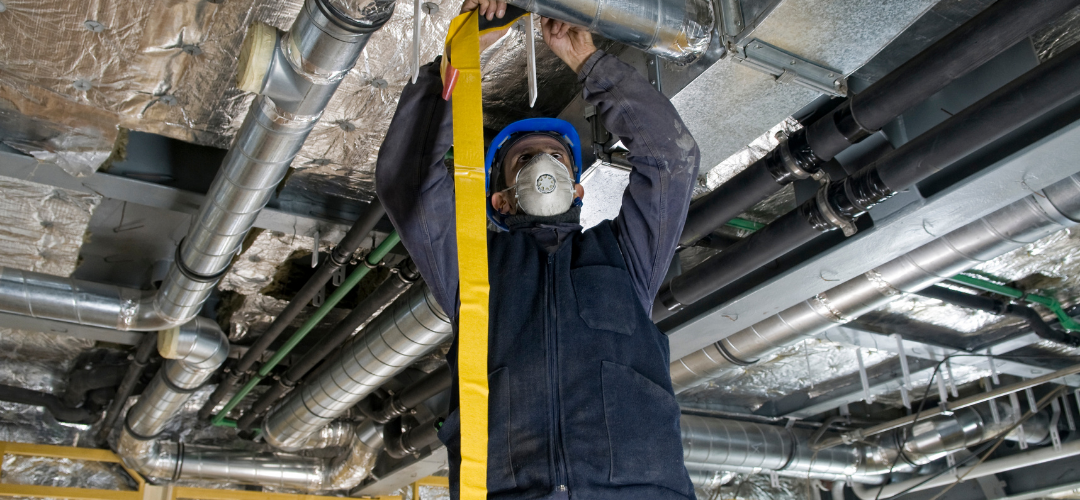Air Duct Replacement Guide: Costs, Benefits, and When to Replace
Is your air conditioner running constantly but your home still feels warm? The problem might not be your AC unit, but the hidden network of ducts behind your walls. So many people in Jupiter, FL, think their AC is failing when the real issue is the pathway that delivers the cold air. Old, leaky, or damaged ductwork can lead to massive energy loss and poor indoor air quality. That cold air you’re paying for escapes into the hot attic, never even reaching your living room. Efficient ductwork is so important for comfort, energy savings, and the life of your HVAC system. A good duct system helps your AC unit work smarter, not harder. This guide will walk you through the key signs that you need new ducts, the benefits of replacement, and what to expect during the process.
Table of Contents

What Are the Signs I Need to Replace My Air Ducts?
Ductwork doesn’t last forever, especially in older homes here in Florida where heat and humidity take their toll. Knowing the warning signs can save you a lot of discomfort and money. It’s better to catch these things early before they turn into bigger problems. Look out for these clues that your air ducts might be failing.
- Age of Ducts: If your ducts are over 15-20 years old, they are likely nearing the end of their life. Materials break down over time, especially the older types of flexible ducts that can become brittle and tear easily. A system this old probably has leaks and poor insulation.
- High Energy Bills: Are your cooling costs going up every summer, even though you haven’t changed your habits? Leaky ducts can be the reason. When up to 30% of your conditioned air escapes through holes and cracks, your AC system has to run much longer to cool the house, which means higher bills for you.
- Poor Airflow: Do you have rooms that are always hot and stuffy, no matter how low you set the thermostat? This is a classic sign of duct problems. Crushed, disconnected, or poorly designed ductwork can prevent air from getting where it needs to go, creating uncomfortable hot and cold spots throughout your home.
- Noisy Operation: Your air conditioning system should be fairly quiet. If you hear rattling, whistling, or banging sounds when the AC kicks on, it could be loose or damaged ducts. These sounds often mean parts have come apart or are not properly supported, causing them to vibrate.
- Visible Damage: Sometimes the problem is easy to see if you can safely look in your attic. Dents, kinks, tears, or sections that have completely fallen apart are clear signs you need an air conditioning duct replacement. This kind of damage severely restricts airflow and leaks a lot of air.
- Excessive Dust & Allergies: If you feel like you are constantly dusting and your family’s allergies are acting up, your ductwork could be the source. Leaky return ducts can pull in dust, dirt, and allergens from your attic or crawlspace and spread them all over your house every time the system runs.
- Signs of Mold: A musty or moldy smell coming from your vents when the AC is on is a serious red flag. Leaks or poor insulation can cause condensation, which leads to mold growth inside or outside your ducts. This is a health hazard that needs to be addressed immediately.
What Are the Benefits of Installing New Air Ducts?
Investing in new ductwork might not be as exciting as a kitchen remodel, but the positive changes it brings to your home are immediate and lasting. It’s one of the best things you can do for your comfort and your wallet. A new, properly sealed duct system from a trusted company like All Thermo Insulation will make your home feel better in so many ways.
- Improved Energy Efficiency: This is the biggest benefit. New ducts are sealed tight with mastic sealant at every connection, which stops the conditioned air from leaking into your attic. This means almost all the cold air your AC produces gets delivered directly to your rooms, where you want it.
- Lower Utility Bills: When your system is more efficient, it doesn’t have to work as hard or run as long to keep you cool. Many homeowners see a nice drop in their monthly energy bills after replacing old, leaky ducts. The savings can add up over the life of the system.
- Better Indoor Air Quality: New, sealed ducts improve the air you breathe. They prevent dust, pollen, insulation particles, and other nasty things from your attic from being pulled into your air supply. This makes a huge difference for anyone with allergies, asthma, or other breathing issues.
- Consistent Home Comfort: Say goodbye to those annoying hot and cold spots. A professionally designed and installed duct system delivers the right amount of air to each room, making the temperature even and comfortable all through the house.
- Quieter HVAC System: Properly installed ducts are secured and supported, which gets rid of the rattling and banging sounds that old systems often make. You’ll enjoy a much quieter and more peaceful home environment.
A Step-by-Step Guide to the Duct Replacement Process
Knowing what to expect can make the air duct replacement process go smoothly. A professional job is about more than just swapping out old pipes for new ones. It’s a detailed process that makes sure your new system is perfect for your home.
- Professional Assessment: It all starts with a thorough inspection. A technician from a company like All Thermo Insulation will look at your existing ductwork to see where the problems are. They’ll check for leaks, damage, and poor insulation to confirm that replacement is the right choice. They will also map out the current system layout.
- System Sizing: This step is so important. The technician calculates the right size and design for your new ductwork based on the size of your home, the number of rooms, and the power of your HVAC unit. A properly sized system is key to good airflow and efficiency.
- Removal of Old Ductwork: The old, damaged, and dirty ducts are carefully taken out. The crew will remove all the old material from your attic and dispose of it properly, leaving a clean slate for the new system.
- Installation of New Ducts: New, high-quality ducts are installed according to the new design. Every connection is carefully secured to make sure the fit is tight and will last for a long time. This is where quality workmanship really matters.
- Sealing and Insulating: This is what separates a great job from a bad one. Technicians seal every seam and joint with mastic sealant, a gummy substance that creates a permanent, airtight seal. After sealing, the ducts are wrapped in insulation to protect them from the attic heat.
- System Testing: Once everything is installed, the technician will turn on your HVAC system and test it. They check the airflow at each vent to make sure its strong and balanced, and they make any final adjustments to get it working perfectly.
Air Duct Cleaning: Why It Matters for Efficiency and Health
You clean your floors and countertops, but what about the air you breathe? The hidden ductwork in your home could be circulating dust, allergens, and more. Over time, your air ducts can get filled with things that hurt your AC’s performance and your family’s health. We’ll break down why air duct cleaning is important, what the process involves, and how it helps your family’s well-being.
- Quick Facts: Professional duct cleaning removes buildup from your home’s entire forced-air system. The biggest health benefit is cutting down on airborne allergens, while the biggest efficiency benefit is better airflow, which puts less strain on your AC unit. It’s a good idea to have it done every 3-5 years.
What’s Really Hiding in Your Air Ducts?
If you could see inside your ducts, you might be surprised at what’s collected in there over the years. This buildup is what you end up breathing every day. A professional cleaning can get rid of it all.
- Dust and Dust Mites
- Pet Dander and Hair
- Pollen and Other Allergens
- Mold and Mildew Spores
- Bacteria and Viruses
- Construction Debris (in newer homes)
How Can Dirty Ducts Affect Your Family’s Health?
All that stuff hiding in your ducts gets blown into your rooms every time the system turns on. This can lead to some real health concerns, especially for children and the elderly.
- Allergies: If your family is always sneezing and has watery eyes inside the house, it could be from the constant circulation of pollen, dander, and dust in your ductwork.
- Asthma: For people with asthma, airborne irritants are a major trigger. Clean ducts mean fewer particles in the air that can cause an asthma attack.
- Respiratory Issues: Breathing in mold spores or bacteria from dirty ducts can cause coughing, sore throats, and other respiratory problems that seem like a cold that never goes away.
- General Well-being: Even if you don’t have specific health issues, poor indoor air quality can just make you feel tired or cause headaches.
The Professional Air Duct Cleaning Process Explained
A real duct cleaning is not a quick 30-minute job. It’s a detailed process that cleans your entire system.
- Inspection: Technicians often start by using special cameras to look inside your ducts to see how dirty they are.
- Create Negative Pressure: A large, powerful vacuum is connected to your duct system. This creates suction, so when the dirt is loosened, it gets pulled out of your house, not blown into your rooms.
- Agitate Duct Walls: High-powered air whips or special rotating brushes are fed into the ducts. They scrub the inside walls of the ducts to knock all the dust and debris loose.
- Vacuum and Collection: The powerful vacuum sucks up all the loosened dirt and collects it in a unit outside your home.
- System Component Cleaning: A good cleaning also includes the other parts of your system, like the blower motor and evaporator coil, to make sure everything is clean.
- Final Inspection: The technician will take one last look to make sure the job was done right and your ducts are clean.
Sweating AC Ducts & Vents: Causes and Solutions for Florida Homes
Have you noticed water dripping from your AC vents or damp spots on your ceiling? This ‘sweating’ is a common problem in Florida, and it’s a sign you shouldn’t ignore. Duct condensation is caused by hot, humid air coming into contact with cold ductwork. This guide explains the primary causes of sweating ducts and provides clear, effective solutions to protect your home from water damage and mold.
What Causes Ductwork Condensation?
Condensation on ducts is a battle between hot, moist air and cold surfaces. In Jupiter, where its always humid, this is a frequent issue.
- Poor Duct Insulation: This is the number one cause. When ducts in a hot attic aren’t insulated well, their cold surface is exposed to the humid air, causing water to form. Good professional insulation services are key to preventing this.
- Air Leaks in Ductwork: Tears and gaps in ducts pull in hot, moist attic air. When this humid air hits the cold air inside the duct, it condenses.
- Low Airflow: A clogged air filter or blocked vents can make the ductwork get extra cold, which makes condensation more likely to happen.
- High Indoor Humidity: If your home itself is too humid, you will see condensation forming on the AC vents.
What Dangers Does Sweating Ductwork Pose?
That dripping water can cause some serious problems if you don’t take care of it. What seems like a small issue can lead to expensive repairs.
- Mold and Mildew Growth: Constant moisture is a perfect recipe for mold. It can grow on and inside your ducts, and the spores can be spread through your home, affecting your health.
- Water Damage: Dripping water can ruin your ceiling, drywall, and even the wood structure of your attic. This damage can be very expensive to fix.
- Reduced Energy Efficiency: When insulation gets wet, it doesn’t work. This leads to energy loss and higher cooling bills.
- Pest Infestations: Damp, dark areas are very attractive to pests.
How to Stop AC Ducts from Sweating: 4 Key Solutions
Fixing sweating ducts for good means fixing the root cause. Here are the most effective solutions.
- Improve Duct Insulation: The best fix is to have a professional from All Thermo Insulation check your duct insulation. Often, adding more or replacing wet insulation solves the problem.
- Seal All Air Leaks: A technician can find and seal all the leaks in your ductwork using mastic sealant. This is a crucial step for both condensation and efficiency. Getting expert AC ductwork services is the best way to handle this.
- Check Airflow: Make sure your air filter is clean and all your vents are open. This simple step can make a big difference in your system’s airflow.
- Control Indoor Humidity: In some cases, a whole-home dehumidifier might be needed to help your AC remove moisture from the air inside your house.
Conclusion
Your home’s ductwork is like its respiratory system, and keeping it in good shape is vital for your comfort, health, and budget. Whether you have old, leaky ducts that need replacing, dirty ducts that are affecting your air quality, or sweating ducts that are causing moisture problems, taking action is important. For over 20 years, the team at All Thermo Insulation has been the expert homeowners in Jupiter trust for these issues.
Don’t let duct problems turn into a major crisis. If you’re experiencing any of these signs, contact a trusted HVAC professional for a ductwork inspection today. A complete solution often involves more than one service, combining new ducts with thorough air duct cleaning to create the healthiest and most efficient system possible. When you’re ready to improve your home’s comfort and air quality, contact All Thermo Insulation.


